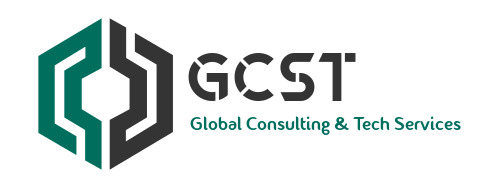At first glance, it appears that data classification and Zero Trust, a cybersecurity framework, would have nothing to do with one another. After all, each has their own separate specialized function – data classification labels data based on sensitivity and Zero Trust is meant to keep unauthorized users from gaining access to company systems and data. However, much like our environmental ecosystem where something seemingly small affects something much bigger, such is also true of the security ecosystem. Let’s take a deeper dive into how data classification affects Zero Trust.
What is Zero Trust and how does it work?
To start off, what exactly is a Zero Trust framework? We all know the saying “innocent until proven guilty”, however, a Zero Trust framework takes the opposite approach of “guilty until proven innocent”. In other words, a Zero Trust framework assumes you are a threat until proven otherwise by authentication measures, such as multi-factor authentication or two-factor authentication (MFA and 2FA). Zero Trust networks are split up into small groups and these authentication measures are required to access each of them. In the instance that one of these networks was broken into, an attacker wouldn’t be able to access all sensitive data and couldn’t freely roam around the system without being detected. This is what makes the Zero Trust model the preferred cybersecurity framework in today’s world – it guards against any threat, be it insiders, employee errors, or outside attackers. However, for a Zero Trust framework to work properly, organizations need to know where their sensitive data is located, when it is created, and how it is used, and shared, which is where data classification comes in.
Know your data, protect your data
Forrester says that in order to implement a true Zero Trust framework, organizations must know their sensitive data intimately. After all, you can only adequately protect the data that you know you have. But with ever-increasing data volumes and velocities in today’s digital world, data visibility can be a challenge for organizations. In HelpSystems’ recent CISO Perspectives: Data Security Survey 2022, 63% of CISOs said data visibility is the biggest challenge facing organizations today. However, there is a simple fix to this challenge – data identification and classification solutions.
Data identification and classification solutions allow an organization to identify where all its sensitive data resides, and classify that data based on predetermined levels of sensitivity. There are three main types of data classification that are considered the industry standard:
- Content-based classification – inspects and interprets files, looking for sensitive information
- Context-based classification – looks to the application, location, metadata, or creator (among other variables) as indirect indicators of sensitive information
- User-based classification – requires a manual, end-user selection for each document. User-based classification takes advantage of the user knowledge of the sensitivity of the document, and can be applied or updated upon creation, edit, review, or dissemination
When it comes to integrating with a Zero Trust framework, context-based classification is the standout type. This method uses machine learning and intuitive processes that integrate with everyday workflows to identify, classify, and provide critical context to data. The context is used to create both visual and metadata labels which organize the data into categories based on type and sensitivity. There are typically four base levels when it comes to initially categorizing data:
- Public– Data/information that is freely used, reused, and redistributed with no restrictions on access or usage. Examples can include press releases, brochures, and published research.
- Internal– Data that is strictly accessible to internal employees/personnel who are granted access. Examples can include company memos, internal communications, and marketing research.
- Confidential– Data that requires granted access and/or authorization and should be contained within the business or specifically permissible third-parties. Examples can include PII, and IP.
- Restricted– Data that is highly sensitive with use limited on a need-to-know basis. If compromised or accessed without clearance, this could result in criminal charges, heavy legal fines, and irreparable company damage. Examples can include trade secrets, PII, health information, and data protected by federal regulations.
In addition to type, data should also be segmented data based on the level of sensitivity and the effect it would have on the organization if it were compromised – high (confidential), moderate (restricted), or low (public). Starting with these data types and levels is just scratch on the surface of data classification, and typically most organizations will require a greater level of granularity and the ability to fully customize their classification solution to align with their data security policy, and classification requirements. Data identification and data classification are in essence, a foundation upon which additional security layers can be placed and to ensure data is protected throughout its lifecycle.
How data classification and Zero Trust work together
According to Forrester, Zero Trust compliance rests on two foundational pillars: strong identity and access management, and a mature data identification and classification framework. The context applied to the metadata labels by data identification and classification is connected to every other part of the Zero Trust ecosystem including identity management, firewalls, automation and orchestration, device security, workload security, and threat analysis.
Earlier, we touched on how the Zero Trust model works by having networks segmented so threats cannot access all data and how they can’t freely roam the system. It is the labels and context given by data classification that allows the other parts of the security ecosystem to check permissions on who should and shouldn’t be accessing what data. In addition, reporting capabilities of who has been accessing data are also part of a data classification solution, giving greater visibility to the organization of what is going on behind the scenes. This is what makes data identification and classification a vital part of the Zero Trust framework.
Without knowing where sensitive data resides, who has access, and how it is used, and shared, even the most well designed Zero Trust framework is flying blind. The ability to identify and provide critical context around data is designed to work hand-in-hand with downstream security solutions, providing a critical first step in the Zero Trust security framework. The seemingly small act of data classification has a huge impact on the effectiveness of a Zero Trust framework, thus drastically affecting and strengthening your security ecosystem.
Resource : Data Classification: The Impact on a Zero Trust Framework – Titus

Software Asset Management CyberSecurity Consultants in the Middle East (gcst.ae)

